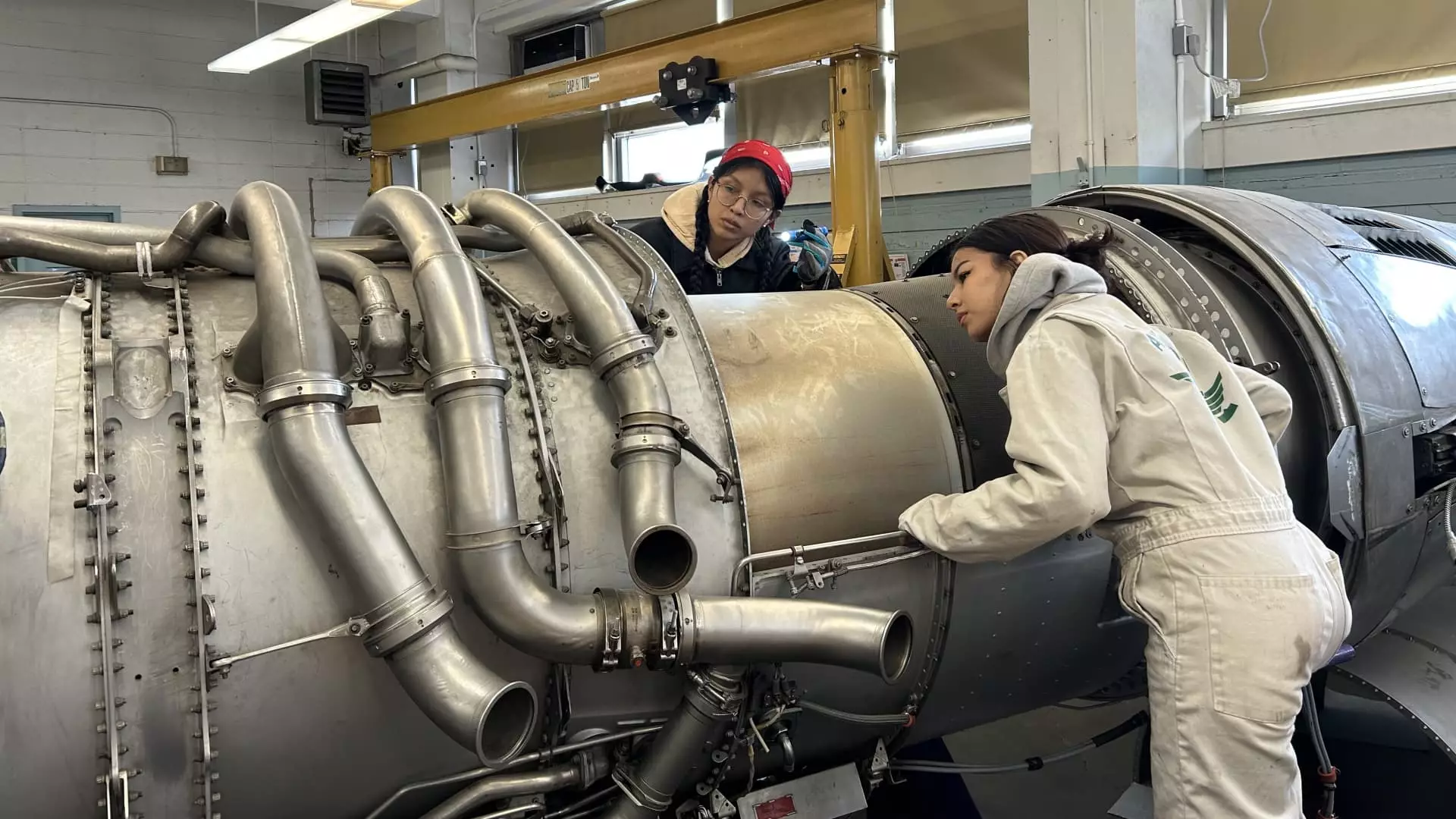In an era where President Trump has heralded manufacturing jobs as pivotal to America’s economic revival, a disturbing trend lurks in one of the nation’s foundational industries: aviation. As the average age of certified aircraft mechanics creeps toward retirement, the United States is not merely facing a shortage of workers but a catastrophic gap in its aviation workforce. According to a joint report by the Aviation Technician Education Council and the consulting firm Oliver Wyman, the U.S. is staring down the barrel of a looming deficit of 25,000 aircraft technicians by 2028. With 40% of current mechanics aged over 60, the urgency of addressing this profound skill crisis cannot be overstated.
The alarming reality of this situation is compounded by a historical context. A significant number of today’s aircraft technicians were hired in the 1980s and early ’90s, following robust market demand. The pandemic acted as a catalyst, hastening a wave of retirements and leaving the aviation sector scrambling to replenish its ranks. As David Seymour, COO of American Airlines, succinctly puts it, the aviation industry has seen incredible hiring and demand but is also nearing a tipping point — if action is not taken swiftly, we risk losing an entire generation of skilled labor without a plan for replacement.
The Impact of the Pandemic on Skilled Labor
The impact of the COVID-19 pandemic on workforce dynamics cannot be overstated. The crisis not only halted the global economy but forced aviation companies to make difficult decisions, including laying off seasoned employees. Christian Meisner, Chief Human Resources Officer at GE Aerospace, highlights this stark reality: the industry lost immense talent when operations ground to a halt. As hiring resumes, it is evident that the aviation sector is fraught with challenges. Not only must companies win back lost employees as demand surges again, but they must also invest in attracting younger talent to ensure sustainability in aviation careers.
While the prospects of entering this field appear lucrative—with aircraft mechanics earning a median salary around $79,140—this generation of workers must confront the reality of skill acquisition. Obtaining the necessary FAA licenses is no small feat, taking years and a significant commitment. Yet young aspirants like Sam Mucciardi are contemplating this pathway, seeking concrete opportunities outside traditional college education routes. In an economic climate where educational debt looms large, this shift in mindset could very well prove pivotal for filling the burgeoning gaps in the aviation workforce.
The Financial Incentives Aren’t Enough
Despite promising financial projections—some technicians making as much as $130,000 a year at the peak of their pay scale after nine years—many argue that these figures do not sufficiently address the predicament. The sentiment expressed by Sarah MacLeod of the Aeronautical Repair Station Association exposes a disconcerting truth: for the aviation industry to thrive, wages must rise further in line with the increasing cost of living and the competitive landscape for skilled labor.
Additionally, the challenges are not confined merely to aircraft technicians. A nationwide shortage of air traffic controllers has stymied growth in the airline sector and raised pressing safety concerns. Manufacturing represents merely 9% of U.S. employment, which begs the question: Why are we lavishing so much collective focus on this sector amid these shortages? Gordon Hanson, a Harvard professor, notes the geographical immobility of workers as a critical issue that may prevent factories from attracting necessary talent. As we navigate the post-pandemic recovery landscape, we must reignite interest and investment in manufacturing jobs far beyond just the aviation sector to ensure resilience.
Innovative Pathways to Recruitment
The forthcoming workforce crisis demands a multifaceted approach that embraces innovation and outreach. Institutions like Aviation High School in Queens, New York, exemplify proactive recruitment strategies. By offering students the chance to earn FAA licenses while still in school, the institution positions graduates favorably in a labor market desperate for their skillset. Principal Steven Jackson emphasizes the increasing interest from airlines following growing demand—a promising trend, yet much more is needed on a national scale.
American Airlines is not standing idly by; collaboration with junior high schools signals a thoughtful strategy to inspire younger generations. By reframing a career in aerospace as cutting-edge rather than archaic, companies can capture the imaginations of aspiring workers. It’s about dispelling misconceptions surrounding manufacturing and showcasing the technology-driven reality of modern aviation careers.
With the stakes as high as they are, a concerted effort to mobilize communities, increase educational accessibility, and stimulate recruitment can transform the trajectory of America’s aviation industry. As we emerge from a period of unprecedented disruption, it is time to confront and overcome the mounting workforce crisis head-on, recognizing that the future of aviation—and America’s economic vitality—depends on it.


Leave a Reply